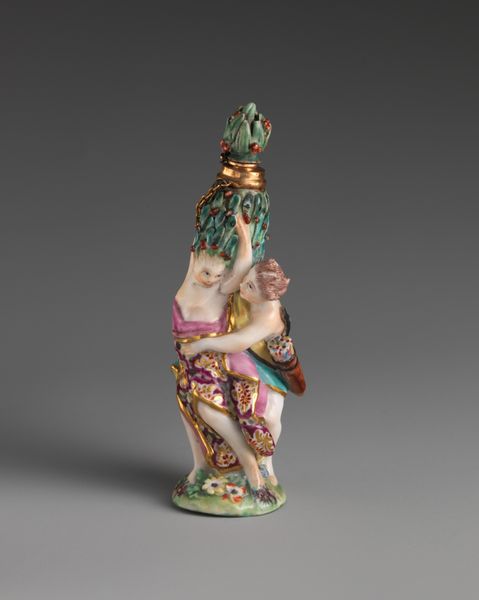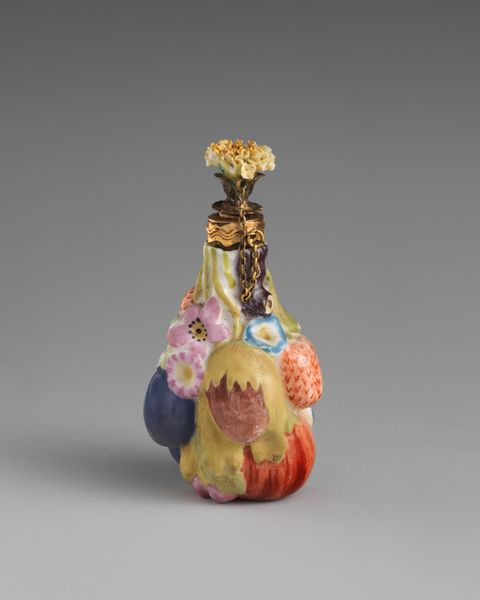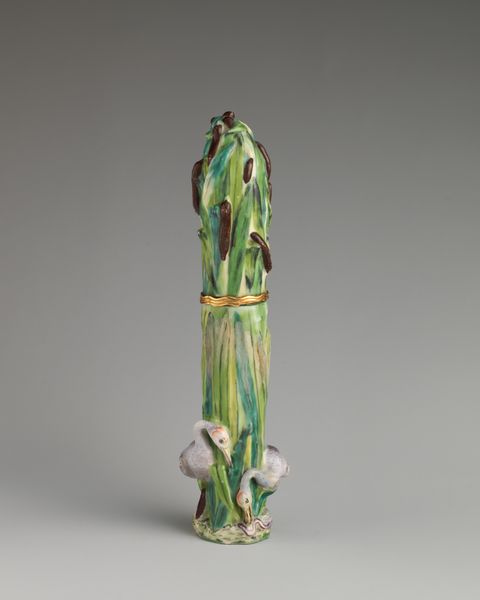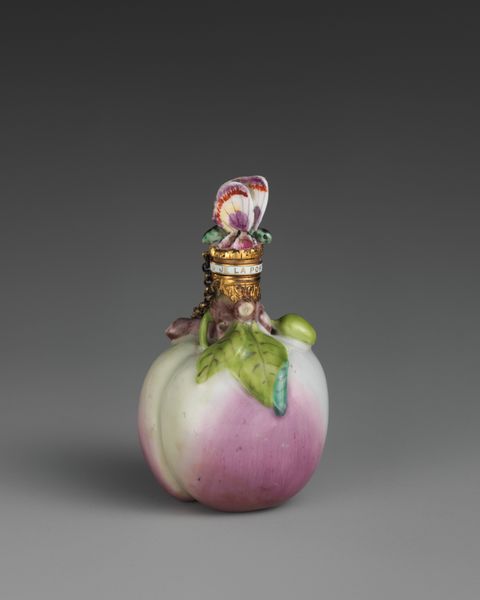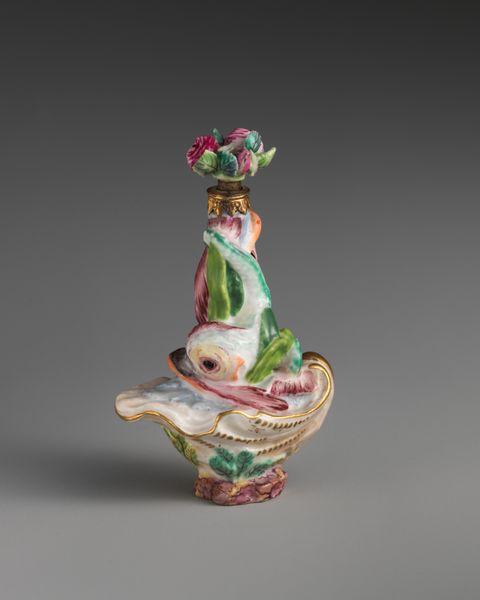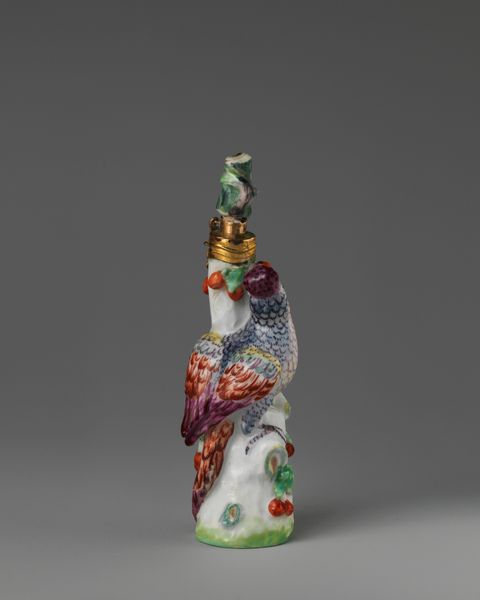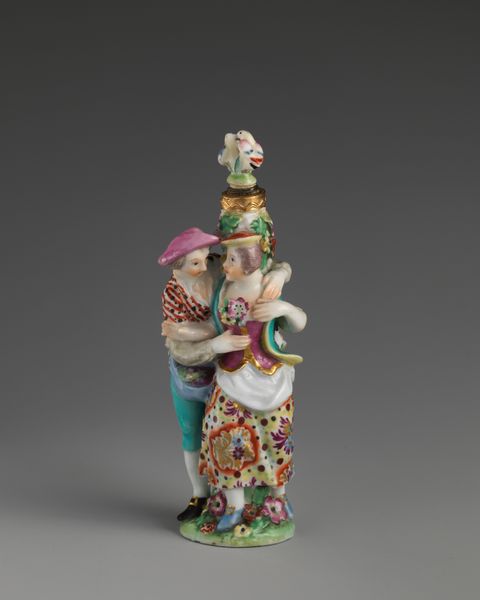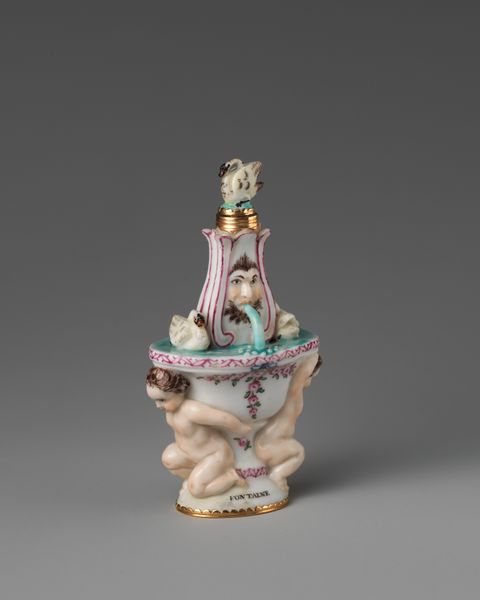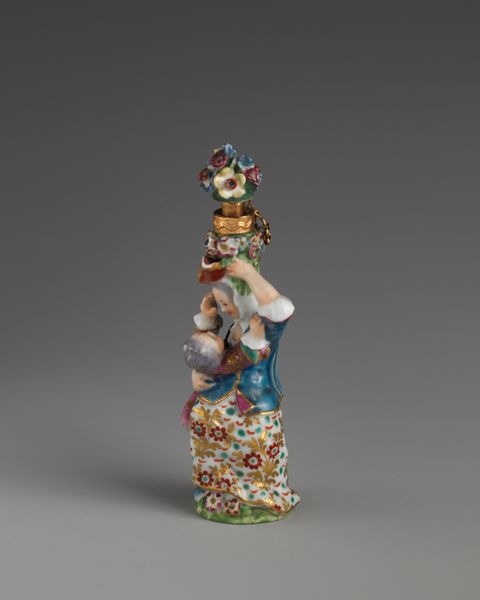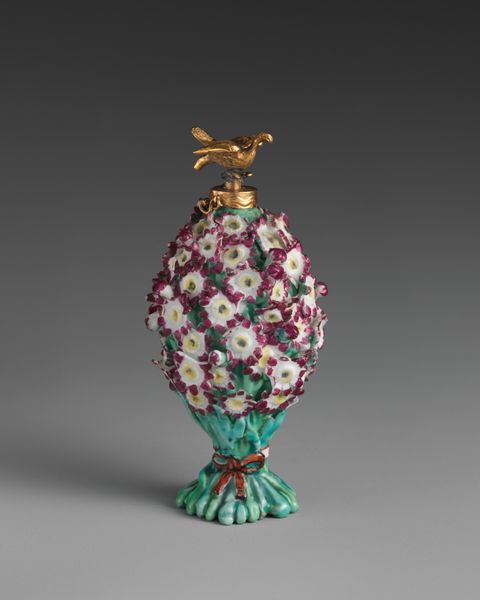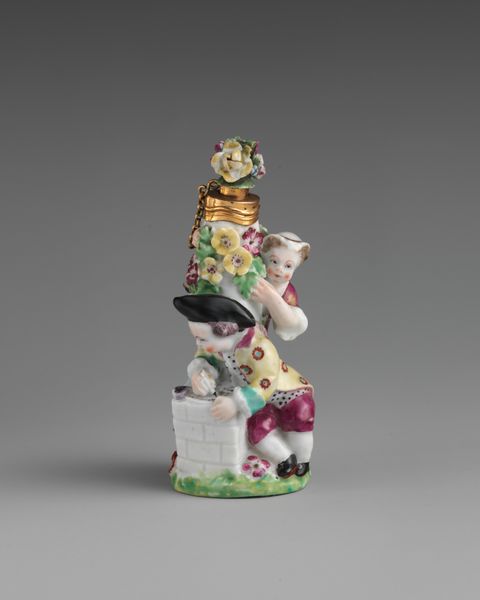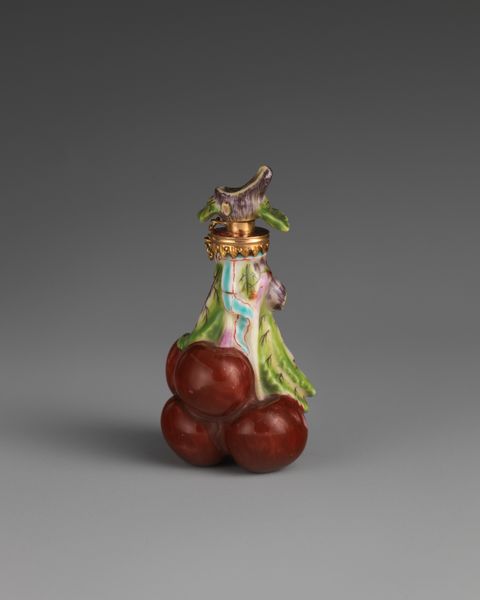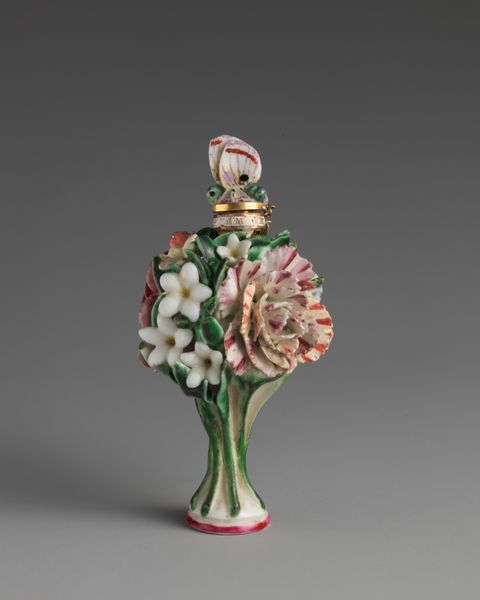
ceramic, porcelain, sculpture
#
ceramic
#
porcelain
#
sculpture
#
decorative-art
#
rococo
Dimensions: 3 1/2 × 1 1/2 in. (8.9 × 3.8 cm)
Copyright: Public Domain
Editor: So this is a porcelain sculpture, titled "Fruit and Flowers," created by the Chelsea Porcelain Manufactory between 1755 and 1765. It’s currently held at the Metropolitan Museum of Art. It’s… surprisingly charming. How would you interpret this work? Curator: Well, let’s consider the context. This isn't simply decorative; it's deeply embedded in 18th-century British culture. Chelsea porcelain was vying for dominance in a market saturated with luxury goods. The meticulous process, the very labour involved, elevated these items to symbols of status. Editor: So the value isn't just aesthetic, but also in what it represents, its making process? Curator: Precisely. Think about the raw materials: clay sourced, pigments carefully mixed, and the firing process, where many pieces were likely lost to imperfection. This piece reflects the wealth and consumerism of the Rococo era and access to those specialized skills. Where do you think that fruit came from? Editor: Somewhere expensive? The shapes and colors don’t seem like local crops, so the ingredients themselves are of high quality and difficult to produce, thereby reflecting someone's higher-status purchasing abilities. Curator: Exactly. It becomes a showcase, doesn't it? It makes you think about international trade networks and displays of wealth. Not unlike a digital icon now. What is says to others, and also how it looks doing so, that becomes a currency in and of itself. Editor: It is interesting how that material production is a symbol. I see what you mean by thinking about it as something "high end" and its impact. Thanks for the help! Curator: Of course. Remembering to center our focus on materiality helps decode its complex meanings.
Comments
No comments
Be the first to comment and join the conversation on the ultimate creative platform.
